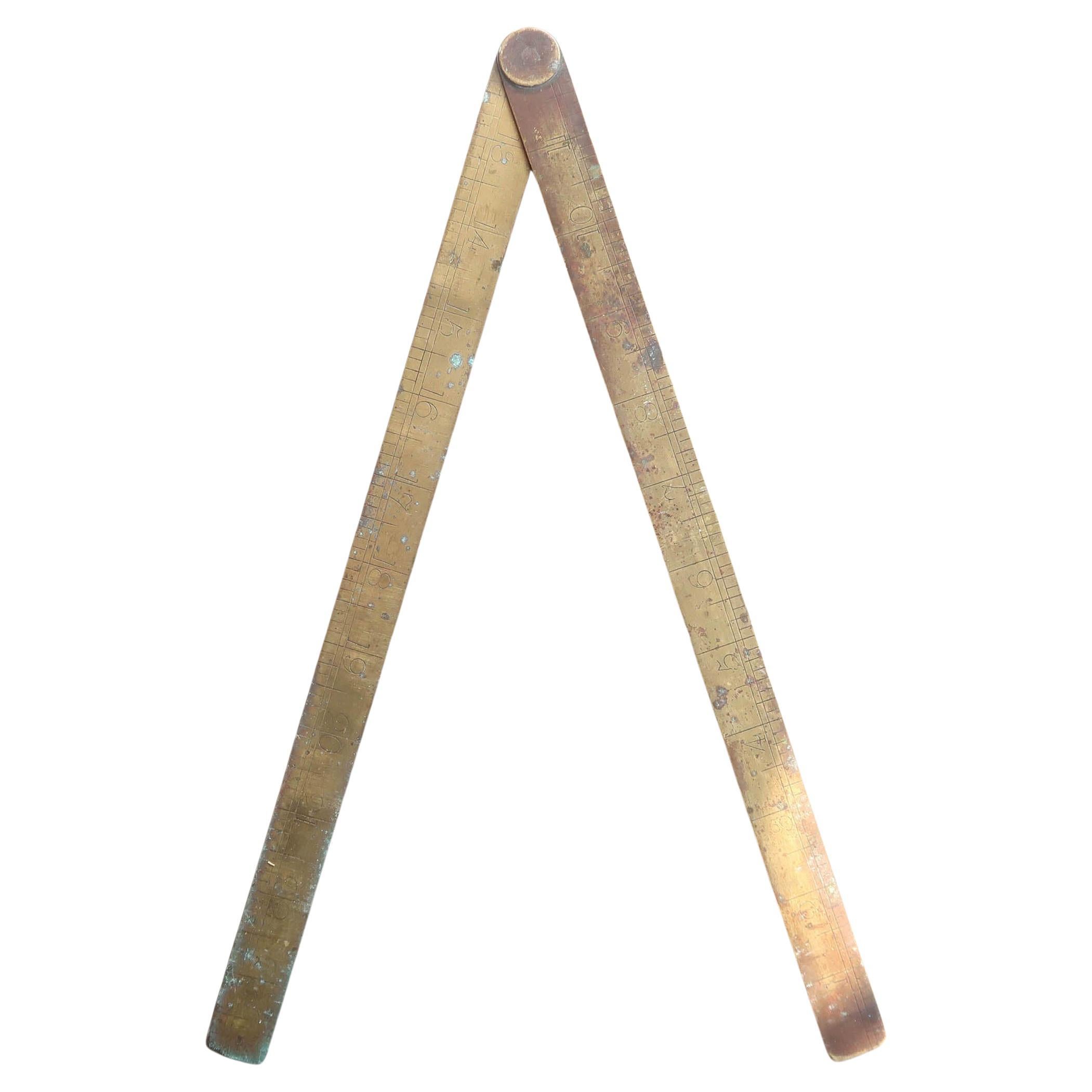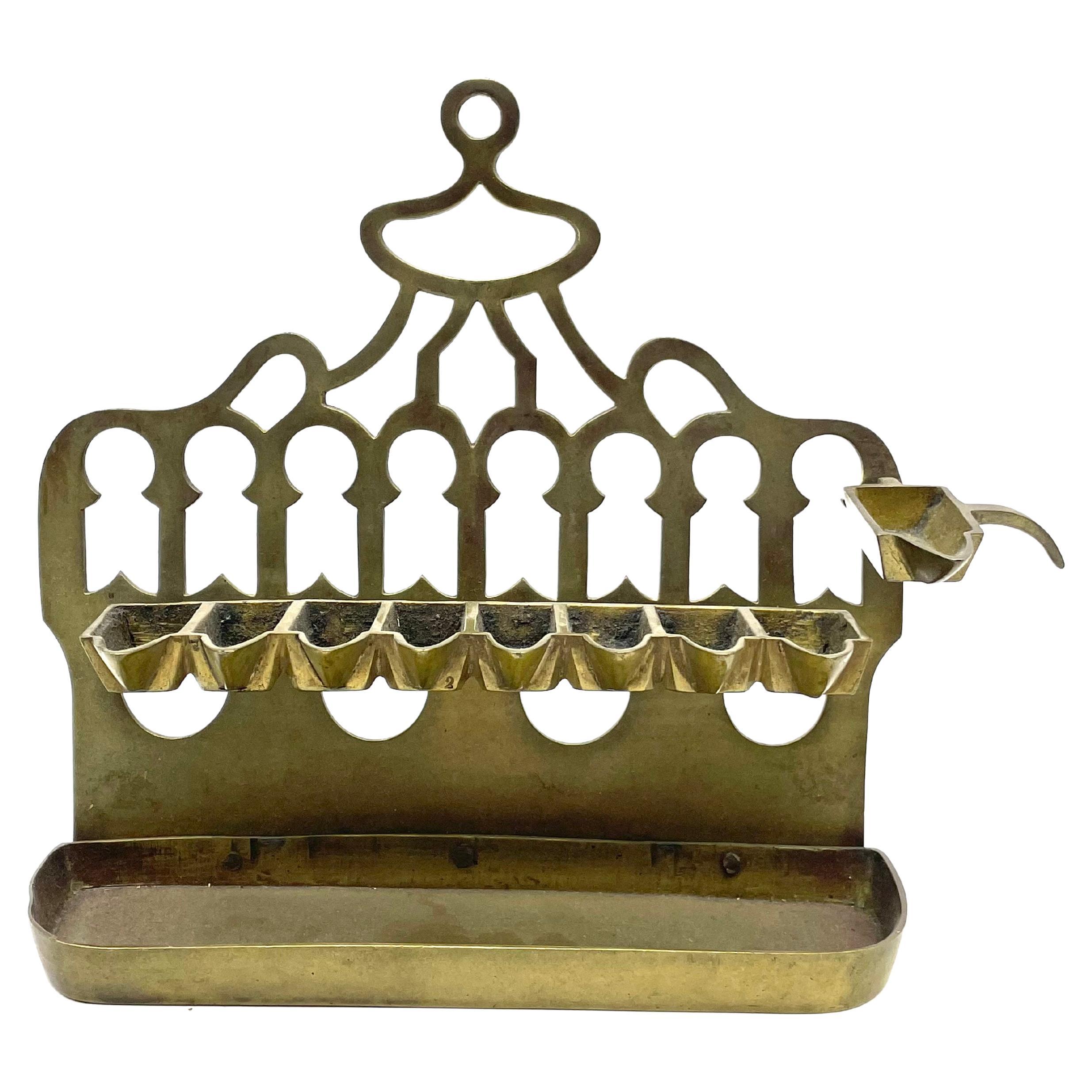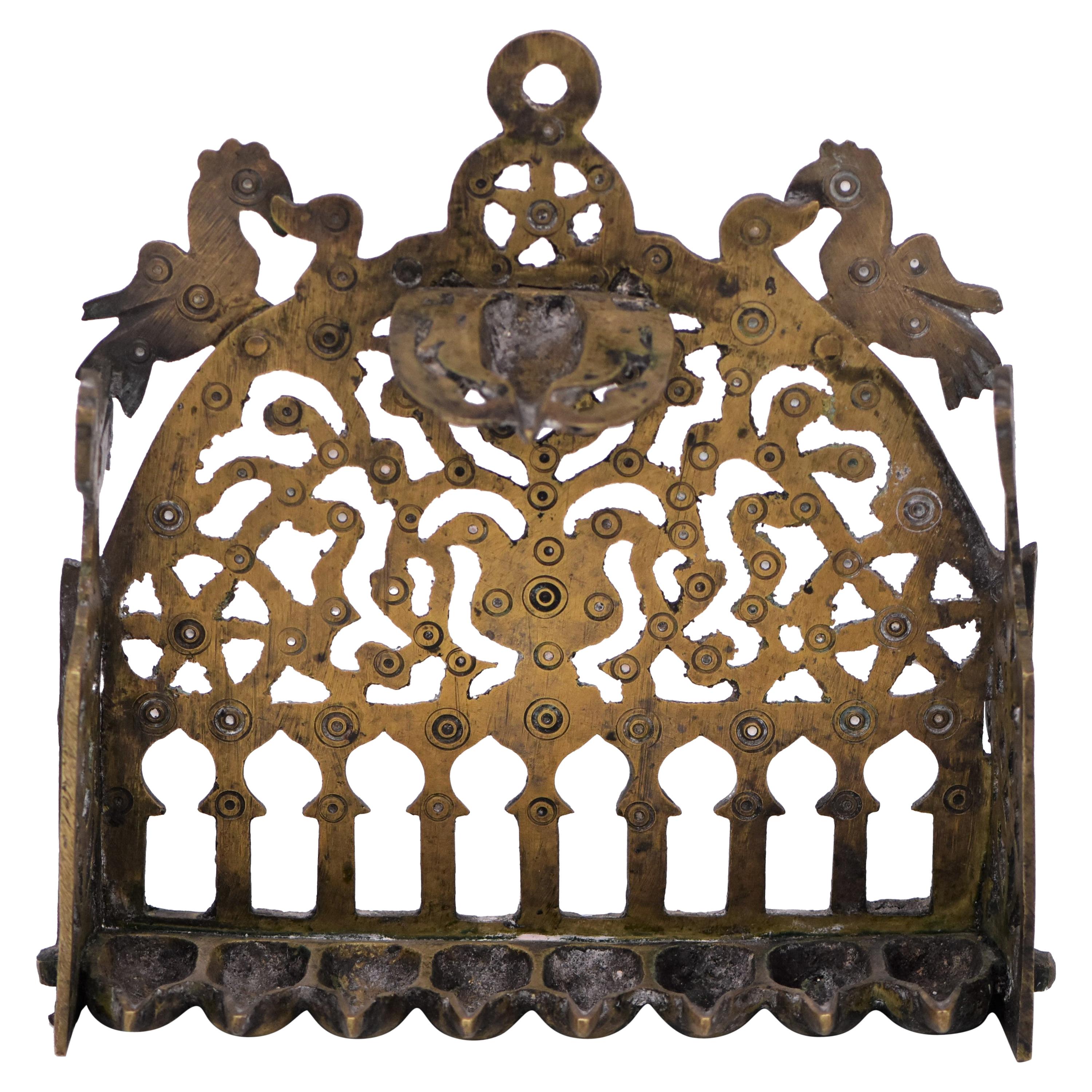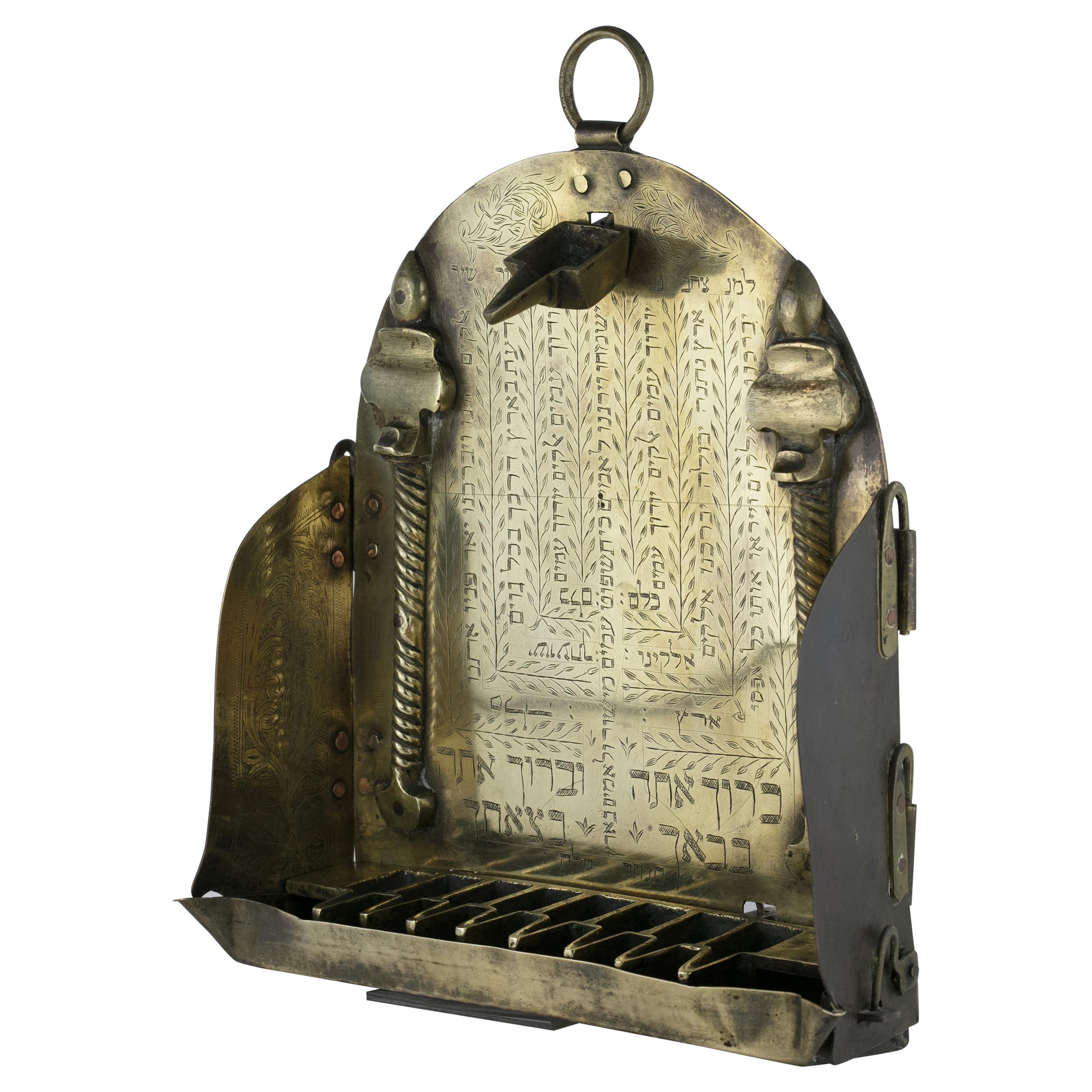Items Similar to Small brass sextant S.te des Etablissements Gaumont Paris late 19th century
Want more images or videos?
Request additional images or videos from the seller
1 of 20
Small brass sextant S.te des Etablissements Gaumont Paris late 19th century
About the Item
Small brass sextant, signed S.te des Etablissements Gaumont Paris 146,
datatable around the end from the 19th century. Instrument complete with optics and housed in a beautiful original walnut square box with original key, hinges, handle, and brass locking hooks. Brass frame with engraved silver goniometric scale embedded in the arch, with scale from 0 to + 130, silver flap and vernier, wooden handle, 1 stained glass for fixed mirror and 2 for movable mirror, a telescope and a adjustment key, index and horizon mirror. Conservation status: very good, complete with stand base made of custom wood and brass. Box size cm 22 x 19 h 11.5 - inches 8.7 x 7.5 x 4.6.
Léon Gaumont France (1864 -1946), engineer was an inventor, entrepreneur and founder in 1895 of a historic film production company, still recognized as one of the most important in France.
Shipping is insured by Lloyd's London; our gift box is free (look at the last picture).
The sextant is an optical instrument used in astronomical navigation to measure the height of the stars on the horizon in order to derive geographical coordinates relative to the ship's point. It is in the shape of a circular sector of 60°, that is, one-sixth of a circumference, hence the name, at the apex of which is pivoted a movable alidade on which is fixed a mirror that rotates with it. On the back of the mirror is a stand with a telescope oriented toward a second mirror, only one half of which is silvered, making it possible to simultaneously observe the sea horizon, in alignment, and the pointed star, whose image is reflected by the mirror attached to the alidade and subsequently by the silvered part of the mirror. By adjusting the position of the index of the alidade, it is possible to collimate the image of the horizon with that of the star and to derive on the graduated scale of the 60° sector the angle between the horizon and the star. To make a sextant measurement of the height of a star (for example, the Sun), one places the instrument in a vertical plane and, looking through the sighting device, aims at the horizon line visible through the unsilvered half of the fixed mirror. Moving the alidade, with which the mirror is integral, causes the light rays coming from the star and subsequently reflected by the moving mirror and the silvered half of the fixed mirror to be sent back by the latter in the direction of observation: if you look through the aiming device, you see the image of the star, obtained by double reflection, coincide with the horizon line. The height of the astro is expressed by the angle whose value is read on the graduated scale. The filter is used when the star to be looked at is the Sun.
It was Sir Isaac Newton who invented the principle of double reflection in navigation instruments, but this research was never published. Subsequently, two men, independently of each other, discovered the sextant around 1730 : John Hadley (1682-1744), an English mathematician, and Thomas Godfrey, (1704-1749), an American inventor. But it was not until 1758 that Admiral John Campbell carried out a series of offshore trials to test a new method that relied on lunar distance as a means of calculating longitude. This was how the sextant was developed. Initially made of brass, they had scales divided with great precision by mathematicians who made scientific instruments.
- Dimensions:Height: 4.6 in (11.69 cm)Width: 8.5 in (21.59 cm)Depth: 8.7 in (22.1 cm)
- Materials and Techniques:
- Period:
- Date of Manufacture:1890
- Condition:Wear consistent with age and use.
- Seller Location:Milan, IT
- Reference Number:1stDibs: LU1020235997482
About the Seller
4.9
Platinum Seller
These expertly vetted sellers are 1stDibs' most experienced sellers and are rated highest by our customers.
Established in 1999
1stDibs seller since 2014
370 sales on 1stDibs
Typical response time: <1 hour
- ShippingRetrieving quote...Ships From: Milan, Italy
- Return PolicyA return for this item may be initiated within 14 days of delivery.
More From This SellerView All
- Late 19th century Wooden and Brass Polarimeter Antique Physic InstrumentLocated in Milan, ITWooden and brass polarimeter with cast iron tripod base from the late 1800s. It is an instrument used to determine the concentration of sucrose and glucose in raw materials and sugar...Category
Antique 1890s British Scientific Instruments
MaterialsBrass
- Aneroid wall barometer in carved wood brass and glass late 19th century.Located in Milan, ITWall-mounted aneroid barometer made of carved wood, brass, and glass, an instrument whose pressure-sensitive organ is a metal box called a barometric capsule. English manufacture of...Category
Antique Late 19th Century Scientific Instruments
MaterialsWood
- Late 19th Century Educational Human Anatomical Ear Model German manufactureLocated in Milan, ITEar anatomical model, plaster and papier mâché hand painted, depicting the inner and outer ear and the cochlea. German manufacture of the end of the 19th century. Good condition, som...Category
Antique Late 19th Century German Scientific Instruments
MaterialsPlaster
- Late 19th Century Architecture Game Constructions Germany Dr. Richter RudolstadtLocated in Milan, ITArchitecture game constructions with 56 colored stones inside a wooden box made in the laboratory of Dr. Richter Rudolstadt Thüringe in the late nineteenth century. The box is comple...Category
Antique 1880s German Games
MaterialsStone
- Late 19th Century J. H. Stewar Barometer and Thermometer Antique Weather MisureLocated in Milan, ITEnglish barometer with thermometer and double Vernier reading the variation of atmospheric pressure. Signed J.H. Steward 406 Strand London in the late 19th century. arometer mounted...Category
Antique 1880s British Scientific Instruments
MaterialsWood
- Late 19th Century Silver Antique Inkwell with Base Obtained from a Deer HoofLocated in Milan, ITSilver inkwell with base obtained from a deer hoof. English manufacture of the late 19th century. Good condition, the ink bottle is missing. Measures: cm 6.5 x 10 H 8. Shipping is insured by Lloyd...Category
Antique Late 19th Century British Inkwells
MaterialsBone
You May Also Like
- Late 19th Century Algerian Brass Hanukkah LampLocated in New York, NYA late 19th century brass casted Hanukkah lamp made in Algeria. The lamp is made of three central parts: its body, a tray for placing the oil candles, and a holder for the servant li...Category
Antique Late 19th Century Algerian Islamic Religious Items
MaterialsBrass
- Late 19th Century Algerian Brass Hanukkah LampLocated in New York, NYAntique Hanukkah lamp, cast brass, rivets, Algeria, circa 1880. Crescent-shaped back plate, with eight gates, a vase with flowers, apertures in veget...Category
Antique Late 19th Century Algerian Religious Items
MaterialsBrass
- Late 19th Century Polish Brass Hanukkah LampLocated in New York, NYFolk art Judaica, antique brass Hanukkah lamp Menorah, Poland, circa 1870. Extremely good patina, the backplate molded with two rampant lions flanking ...Category
Antique Late 19th Century Polish Religious Items
MaterialsBrass
- Late 19th Century Moroccan Brass Hanukkah Lamp MenorahLocated in New York, NYHandmade hanging brass Hanukkah lamp Menorah, Tetuán, Morocco, circa 1880. Engraved above the oil fonts in Hebrew: “Blessed shall you be in your comings and blessed shall you be in y...Category
Antique Late 19th Century Moroccan Religious Items
MaterialsBrass
- Antique Brass Folding Ruler. English, Late 19th CenturyLocated in St Annes, LancashireBrass folding ruler. Folds out to a maximum of 24 inches Finely engraved numerals Original patina No makers markCategory
Antique Late 19th Century English Nautical Objects
MaterialsBrass
- Leather Wrapped "Paris Jockey Club" French Binoculars, Late 19th CenturyLocated in Savannah, GAStamped "Jockey Club Paris"Category
Antique Late 19th Century French Nautical Objects
MaterialsLeather
Recently Viewed
View AllMore Ways To Browse
Campbell Piano
Molto Collectibles
1 Mira
Il Sestante
Grog Barrel
Brass Model Boats
Antique Nikon
Pocket Sextant
Molto Collectibles
Nikon Ww11
Rms Titanic
Stanley London Compass
Two Day Mahogany Cased Marine Chronometer
Vintage Francis Searchlight
Vitamin T
Antique Block And Tackle
Antique Block Tackle
Antique Japanese Glass Fishing Floats





